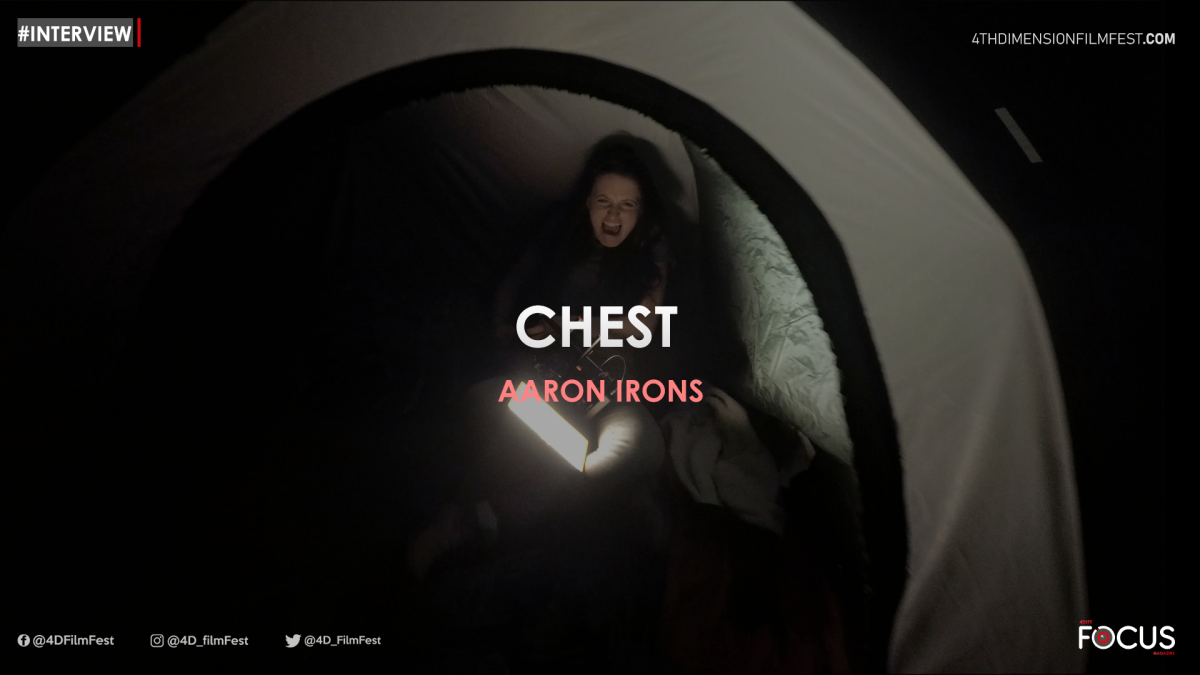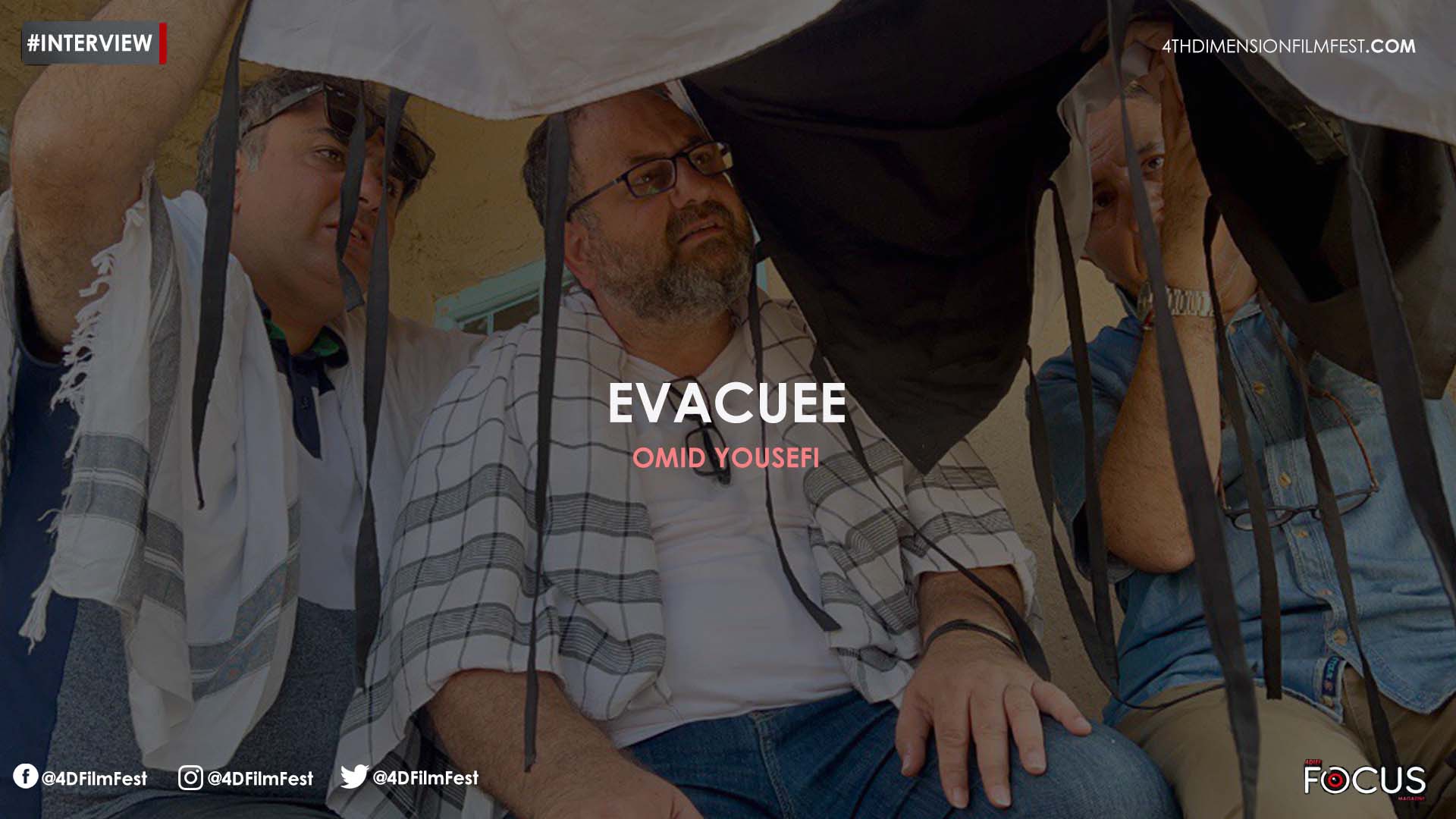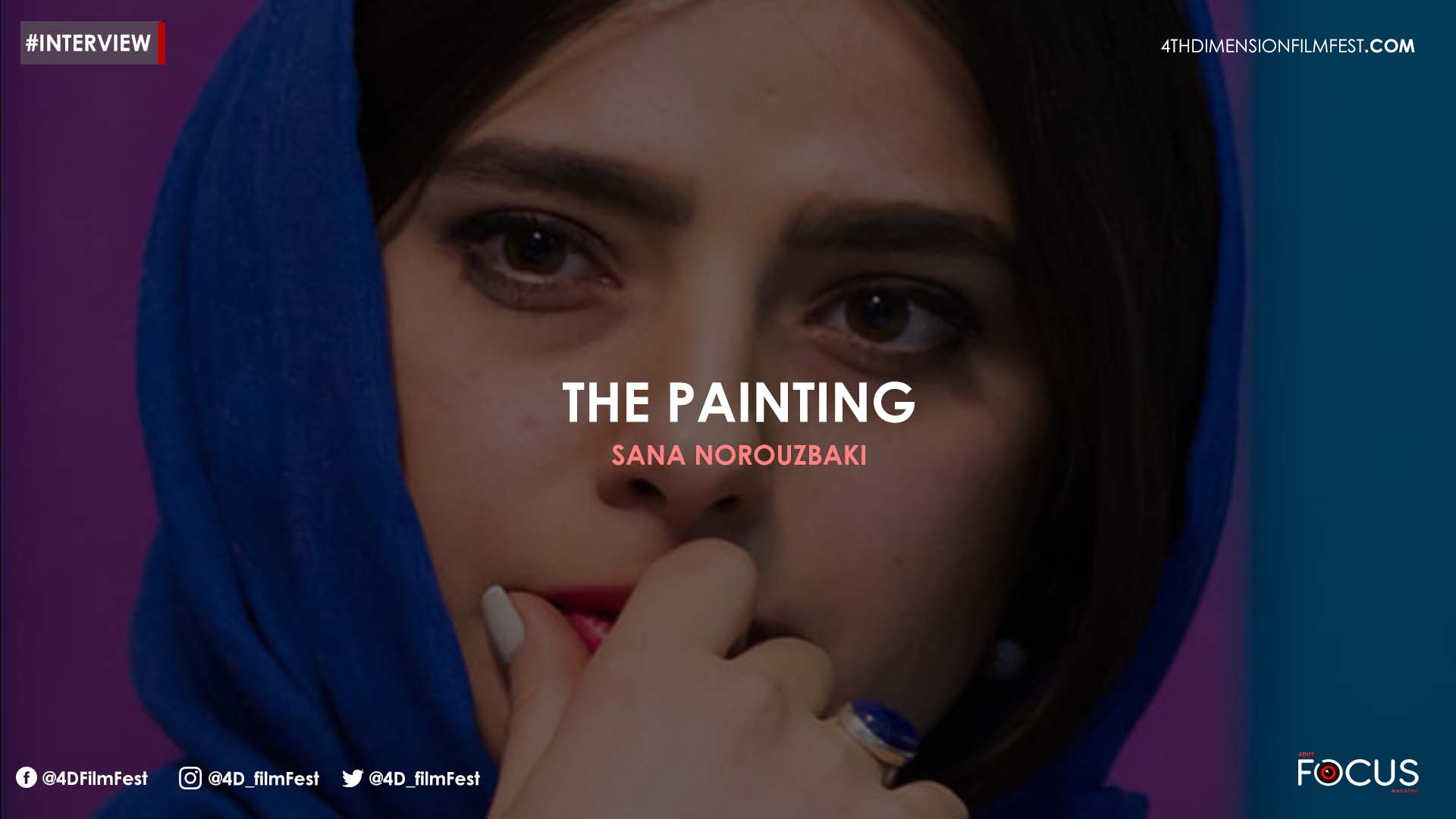Tell us about the importance of stories today. Why do you think stories need to exist in a world plagued by indifference and boredom?
I believe that stories are one of the most important things we have as human beings. Stories are the root of all art. Music, paintings, dance, film: all are vessels in which a story is told. And it is something everyone can do. Everyone can tell a story. I believe people are inherently bored and lonely creatures–and stories are what make our lives exciting and make us feel like a part of something bigger than we are. And I think the line between a civilized and uncivilized society is not wealth and power–it is culture and storytelling.
How do you see the magnificent world of the bioscope? What according to you makes a good movie? Do you have a preferred genre?
I think the most important thing in a movie is the story. Lots of things make a good film and you can get away with a lot of imperfections as long as there is a story that is meaningful and it is told in a way that moves the audience. I like all genres of film but I definitely will always gravitate towards horror films. It’s one genre that can really be all genres at once. A GREAT horror movie is disturbing, thoughtful, dramatic, funny and leaves you thinking afterwards. There are so many different sub-genres and styles it never gets stale, and is a genre that can really influence its audience long after they have walked out of the theater. You can really mess with someone’s head with horror—and that’s exciting.

Do you have an interesting story to tell about your journey in the industry ? It would be nice if you shared even a fragment of your wisdom with us?
Hah, well I’m not sure how much “wisdom” I can give. This is my first attempt at filmmaking and I’m still getting used to calling myself a “filmmaker”. I started this journey with a small group of friends and from the start I took on the roles of at least 50 different crew members–writing, directing, casting, all producer roles, budgeting, payroll, editing, sound, set design, props, SFX, music, and on and on. I guess the one piece of advice I would give someone who wants to make a movie is to trust your gut, go with your instinct, but also put your faith in people you trust and let others take on some responsibilities and don’t try to do everything by yourself. It will save you enormous amounts of stress and frustration. I wanted to give up so many times through this process but having others there to help through those times is important. I also would suggest trying to self-fund your project as much as you can. It is an enormous relief not to be in debt to anyone on this project after it is complete. And it gives freedom to basically do whatever you want with what you have created.
Could you suggest us a few movies? Movies that you have watched and re-watched and you believe everyone must watch them at least once in their life.
Despite being an obsessive horror fan my favorite movie of all time is Harvey (1950) with Jimmy Stewart. That movie really hits a lot of points for me and has some of the best written dialog ever. I’m a huge fan of the Evil Dead franchise, but if I had to pick a favorite horror film it would either be Texas Chainsaw Massacre or Hellraiser (two very different films, I know). Recently, and since CHEST is a found footage film I will suggest the following found footage films as my favorites:
Blair Witch Project (this started my obsession with the genre, and is a perfect masterpiece)
Grave Encounters — all of Colin Minihan’s horror films are incredible.
Taking of Deborah Logan
The Tunnel (AUS, 2011)
Digging up the Marrow (also all of Adam Green’s films are amazing and fun)
Devil’s Pass
Leaving DC – such a unique movie, and basically just one person the entire time–this movie shows that just a couple people can write a good story and make it for nothing and it is very effective.
Host (2020)
Troll Hunter
Horror in the High Desert
Lost Footage of Leah Sullivan (love the practical scares in this one)
Hell House LLC
Crowsnest and Evil Things (2009) — These two movies get a lot of bad ratings for some reason but I have watched these so many times. I don’t know, there is just something so raw about these films that use very subtle methods to elicit fear and dread.
I could go on and on with lists of found footage movies. I watched about 500 found footage films in preparation for writing my first draft of CHEST, so there are tons I love and plenty I am forgetting above.
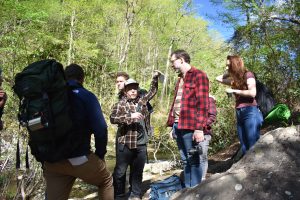
Having watched a recent found footage horror film also structured as a documentary titled The Medium by Banjong Pisanthanakun , how do you see the genre of horror and mystery evolving with the help of the documentary format?
The Medium was great! I think the found footage format is the rawest storytelling method out there for the modern film–it forces you to focus on the story and you can get really creative with the technical aspects if you want to. I know a lot of people ignore it, but I think the genre is amazing and has so many different creative possibilities to get a response from an audience. And even if we go into a found footage film knowing it is a movie, there is a beautiful realism that exists somewhere inside us, and part of us thinks it could be real–and you can’t do that with a normal cinematic style. The rawness has its roots in the Dogme 95 style of filmmaking, which I always found fascinating. It also has opened up filmmaking to a whole new audience and to filmmakers who normally would never even try to make a movie. And as long as you have a great story–you don’t need millions of dollars and a bunch of greedy investors to tell it. And that’s what this genre is: It is an opportunity for those who normally would never consider it. Oh, and Found Footage fans are the BEST and are a real community of misfits and outcasts and it’s the kind of people I love to be around.
Tell us something about the Pandora’s Box trope. A sort of ominous object that invites a tumultuous form of despair through uncalled for revelations.
I feel like the Pandora’s Box trope is a lot like a virus trope. It’s something that can reap such terrible suffering on its victims without any kind of face or presence–it’s an unknown or invisible monster even if it has a physical presence. It’s not until we understand its genesis that we find out the true source of power and motivation. There is something about an object being the source of suffering in a film that makes you realize it is not the object itself, but the hidden darkness inside it. I think it’s an interesting trope in that a tiny wooden box can seem just as terrifying as any machete wielding maniac in a hockey mask.
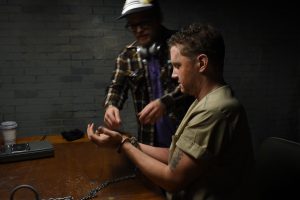
Can you tell us about the process of shooting the film? What were perhaps the difficulties that you had faced while filming this?
Oh, boy where to start! The film was basically shot with two cameras, and 4 body cameras that were used in different places (on people, in vehicles, etc) by a bunch of people who were figuring out everything as we went. Most scenes that were in a set location like a bar, apartment, cabin, etc were pretty formal film sets where we just had the actors behind the cameras or pretending to film–but often the actors were holding and filming many of the scenes themselves. This was difficult at times to make sure they were actually capturing what I needed, and that the other actors were actually looking AT the cameras–which is contradictory to what all actors are taught. Scenes that are a solo person in the woods or a cave were all shot by myself. I spent a lot of time running around in the dark woods and caves by myself capturing POV scenes where I did not want to risk anyone getting hurt, especially in the scenes inside the mine shaft. There is a scene inside a cave where most of that was all shot with body cameras, and we didn’t have time to review footage and there would be no reshoots so we just made sure they were rolling and had the actors do the scenes, just hoping we got the footage we needed because we were spending 4-5 hours inside the cave and people were quickly getting cold. Luckily it worked out and sometimes it presented moments of “accidental genius” in the editing room when reviewing the footage. A lot of the filming was putting a lot of faith in chance and chaos. Also, the pandemic put us on hold for about a year and a half.
Do you believe the idea of stories from the past, cursed occurrences, folklore bring a form of trepidation about the unknown?
I do believe all stories and legends have some amount of truth to them, and the scary ones are even scarier knowing they might be true. I touch on this idea in the film and how stories can change over time and become bigger and grander as they get told. It’s like the game of “telephone” where you whisper a phrase to someone next to you and they pass it on to the next person and on and on and when it gets to the last person you compare it to the original person and it always vastly different–but parts of it are the same as the start. Same thing in how stories get passed down. Things get added to make it more interesting or scary and you end up with something completely different by the end.
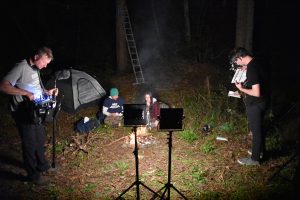
You have mentioned that the movie nearly killed you. You have also claimed that the movie is based on real events, stories that you heard while growing up. Could you tell us something about it if you are comfortable?
The stories in CHEST are actually all true stories–at least to an extent. The mysterious box being found by hunters in a cave is a real story–I even spent a lot of my adolescence wandering around the mountains with friends looking for the mysterious cave and the box inside it. And the story of Jefferey’s Hell and Ebenezer Jefferey is also a true story–the man really did disappear into a cave with his dogs. There were tons of other stories we wanted to talk about in the film but had to cut for time. The area I grew up in has a lot of very weird and strange stories and they really do influence the people that live there. My current screenplay project is an anthology horror series about a whole slew of these other stories we didn’t get to.
As far as the brushes with death, during the process of making this movie, I had a sort of nervous breakdown at one point where I completely lost my hearing and thought I was dying. I went to multiple doctors–had MRI scans done and all of that and no one could figure out what was happening. They said it is likely extreme stress. And they were right because the day after I finished signing all of my paperwork with SAG (screen actors guild) my hearing came back and I was totally fine–that signatory process was extremely stressful doing it all on my own–so if you use SAG for a film, hire a producer to do it for you!
But the one story where I really thought I was about to be murdered was when I was location scouting back in East TN and I went out at night to where there is an old abandoned “round house” we used in the film and despite having a signed contract from the landowner to be there, I encountered another person who lived nearby who thought I was there to vandalize things (despite carrying a large camera and gear). While filming at the abandoned house around midnight, a large truck came barreling down the road and slammed its brakes in front of me. A large, angry man named “Tater” (slang for Potato, for non-American audiences) and his son (I nicknamed him “Tater-tot”) both pulled guns on me and forced me into their truck at gunpoint. I had to ride in the backseat of their truck and drive several miles down from the mountains where I could get cell phone service to call the landowner to prove I had permission to be there. It was pretty terrifying at the time, and no one knew I was there so they could have killed me and stolen my camera and no one would have known. Luckily Tater stayed away while we had our crew there filming months later.
How immaculately did you have to devise the technical aspects of the film keeping in mind the significant role it played in the movie? The sound, the frames, etc.
The most important thing in this film (and all films) was making sure the sound was consistent. For everything else we were able to get away with imperfections. The difference between found footage and the regular film is the sound can be bad–it just needs to have a reason for being bad and stay consistent during that scene, but we tried to get the best quality sound we could despite being in locations like next to waterfalls, inside caves, and so forth. I didn’t care about the perfect angles, the perfect lighting, or any of that–it is meant to look raw. But I also wanted to make it watchable so there was a thin line there in terms of “quality”. Also, continuity with so many different cameras running at once was always a challenge.


